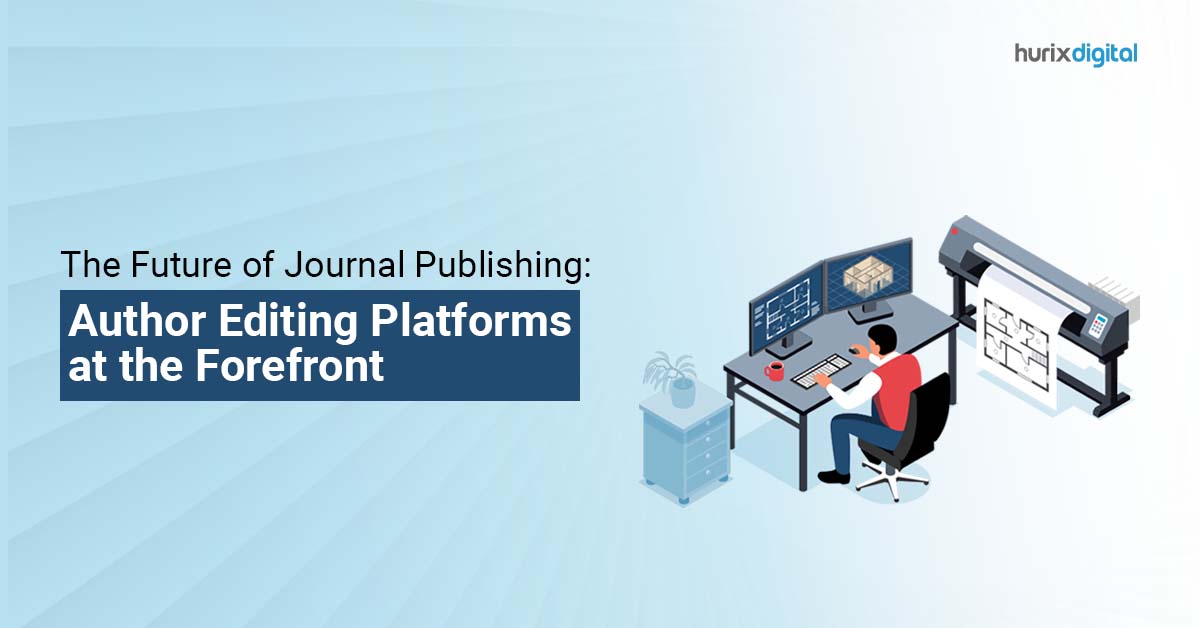
The Future of Journal Publishing: Author Editing Platforms at the Forefront
Summary
This blog analyzes popular author editing platforms for journals, like ScholarOne, their necessity, satisfaction levels, and future AI and open access influences.
There are several author editing platforms available for journals, and the best one for you will depend on your specific needs and preferences.
Table of Contents:
- Five Popular Author Editing Platforms for Journals
- Background for Necessity for a Journal Author Editing Platform
- Current Emerging Trend of Author Editing Platforms
- What is the Future of Author Editing Platforms for Journals?
- Conclusion
Five Popular Author Editing Platforms for Journals
- ScholarOne Manuscripts: This platform is widely used by journals and publishers and allows for manuscript submission, peer review management, and author editing.
- Editorial Manager: This platform offers manuscript submission and tracking, peer review management, and author editing features.
- Open Journal Systems (OJS): This open-source platform is free to use and offers features for manuscript submission, peer review management, and author editing.
- Typeset: This platform offers features for manuscript submission, peer review management, and author editing, as well as formatting tools and a library of templates.
- Publons: This platform is designed to help authors track their publications, peer review activity, and citations, and offers author editing tools as well.
Ultimately, the best author editing platform for your journal will depend on your specific needs, budget, and preferences. It is recommended to explore the features and capabilities of each platform before making a decision.
Background for Necessity for a Journal Author Editing Platform
The background for the necessity of an Author Editing Platform for Journals can be traced back to several factors:
- The Rise of Digital Publishing: With the increasing shift towards digital publishing, many journals have moved away from print-based workflows to online publishing systems. This has created a need for authors to be able to submit their manuscripts online and collaborate with journal editors and reviewers in a digital environment.
- Increasing Competition Among Journals: The academic publishing industry has become increasingly competitive, with authors and publishers alike striving to publish high-quality research and increase their impact. To stay competitive, journals need to provide authors with tools that help them produce well-written, well-formatted manuscripts that meet the journal’s standards.
- The Need for Efficient Editorial Workflows: With the increasing volume of submissions to many journals, there is a growing need for efficient editorial workflows. Author editing platforms can help streamline the review and revision process by allowing authors to make changes directly in the manuscript, eliminating the need for back-and-forth emails and file attachments.
- The Demand for Open-Access Publishing: Many authors and funders are now demanding open-access publishing, which requires journals to make articles freely available online. Author editing platforms can help facilitate this by providing authors with tools to format their manuscripts for open-access publication.
Overall, the rise of digital publishing, increasing competition among journals, the need for efficient editorial workflows, and the demand for open-access publishing have all contributed to the necessity for Author Editing Platforms for Journals.
Are Authors Happy with the Current Emerging Trend of Author Editing Platforms?
There is no single answer to this question, as opinions on author editing platforms vary widely among authors. Some authors are very happy with the current emerging trend of editing platforms, as they provide an efficient and streamlined way to collaborate with journal editors and reviewers and make revisions to their manuscripts. Other authors may be less satisfied with these platforms, as they may find them difficult to use or restrictive in terms of formatting options or the types of revisions they can make.
That being said, there are some potential benefits of author editing platforms that are widely recognized by many authors, including:
- Improved Collaboration: Author editing platforms allow authors to collaborate more effectively with journal editors and reviewers, by providing a centralized location for manuscript revisions and feedback.
- Increased Efficiency: By eliminating the need for back-and-forth emails and file attachments, author editing platforms can help speed up the review and revision process.
- Greater Control over the Publication Process: Author editing platforms give authors more control over the publication process, by allowing them to make revisions and track the progress of their manuscript through the review process.
- Improved Manuscript Quality: By providing authors with tools to format their manuscripts correctly and address common issues, author editing platforms can help improve the overall quality of the final published work.
Ultimately, the satisfaction of authors with editing platforms will depend on a range of factors, including the specific platform being used, the needs of the author, and the level of support provided by the journal or publisher.
What is the Future of Author Editing Platforms for Journals?
Author editing platforms for journals are likely to play an increasingly important role in the future of academic publishing. These platforms are designed to help authors prepare their manuscripts for submission to journals, by providing tools for formatting, checking for plagiarism, and ensuring that the manuscript meets the journal’s specific requirements.
One trend that is likely to continue in the future is the integration of author editing platforms with other publishing tools and services. For example, some platforms may incorporate tools for peer review or data analysis or may offer services such as language editing or graphic design. This integration can help streamline the publishing process and make it more efficient.
Another trend that is likely to continue is the use of artificial intelligence and machine learning to improve the functionality of author editing platforms. For example, these technologies can be used to identify and correct errors in grammar and spelling, suggest alternative phrasing or synonyms, or analyze the manuscript for clarity and readability.
Conclusion
Finally, as open-access publishing continues to grow in popularity, author editing platforms may play an increasingly important role in helping authors navigate the complexities of publishing their work in an open-access format. These platforms can help authors understand the different open-access models, comply with funder mandates for open-access publishing, and ensure that their work is discoverable and accessible to readers.
Overall, it seems likely that author editing platforms will continue to evolve and play an increasingly important role in academic publishing in the years to come.
Get in touch with us today!
Also Read: 3 Types of Copy Editing that Make it a Core Editorial Service

Vice President – Content Transformation at HurixDigital, based in Chennai. With nearly 20 years in digital content, he leads large-scale transformation and accessibility initiatives. A frequent presenter (e.g., London Book Fair 2025), Gokulnath drives AI-powered publishing solutions and inclusive content strategies for global clients




